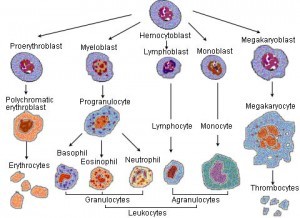 Cells That Reduce Autoimmune Attacks: Diabetes is a growing epidemic. In fact, more than 24 million Americans have diabetes and a little more than 57 million individuals are pre-diabetic, which means they are right on the border of becoming a full blown diabetic. Diabetes affects so many people’s lives that it has become the number seven killer in the United States. Annually, more children develop diabetes through hereditary genes and an obesity rate that just keeps skyrocketing. Elderly patients seem to have diabetes worse than anyone else and many end up losing their life to the disease of diabetes.
Cells That Reduce Autoimmune Attacks: Diabetes is a growing epidemic. In fact, more than 24 million Americans have diabetes and a little more than 57 million individuals are pre-diabetic, which means they are right on the border of becoming a full blown diabetic. Diabetes affects so many people’s lives that it has become the number seven killer in the United States. Annually, more children develop diabetes through hereditary genes and an obesity rate that just keeps skyrocketing. Elderly patients seem to have diabetes worse than anyone else and many end up losing their life to the disease of diabetes.
Each year comes a new generation of diabetics who are hopeful that one day, advancements in medical research will find a cure. With that being said scientists might have accomplished just that.
Through recent investigative medical studies, issued by researchers at the Dana Falber Cancer Institute and Harvard Medical School Department of Pathology, a new advancement has appeared that just might help break the ever-growing cycle of autoimmune attacks that occur within the body destining individuals with life-long illnesses such as lupus, cancer and even type 1 diabetes. A connection has been made between the function of cells and the reduction of autoimmune attacks.
With this distinction becoming clear, scientists hope to develop new advances for treating autoimmune diseases like type 1 diabetes. Here is how it all works:
In the body, there is an amount of white blood cells known as CD8+ Treg cells. These cells exist to help fight against bacteria in the body, they not only kill an infected virus they can also kill tumor cells. CD8+ Treg cells have the ability to counteract autoimmune attacks on the body, which allow cells to be increased through a chemical process, all the while, reducing antibodies that attack tissue within an individual’s body. Ultimately, CD8+ cells control autoantibody formation, which is the creation of antibodies that end up attacking the body’s own tissues.
This is all possible due to the bodies “B” cells. B cells are a subpopulation of white cells that exist in the body to make antibodies that connect to pathogens, which helps to accomplish their destruction in the body. When B cells are activated in response to follicular T helper cells, autoantibody formation happens, which results in an unwanted autoimmune attack.
Through this discovery, scientists are now able to focus on B cells, so they can stop antibodies from attacking the body’s cells. Through CD8+ Treg cells, it has become possible to control follicular helper cells, which are more efficient in the body, instead of directly controlling B cells. If scientists can control one follicular cell, they could end controlling many B cells, which in turn helps to stop autoimmune attacks on the body.
This new research will open new doors to medical advancements in autoimmunity diseases. With a large amount of the United States alone being diagnosed with diabetes, there have been large amounts of practical “cures” that have come out through medical advancements in hopes to break the cycle of diabetes. Even herbal remedies have given some relief to those suffering from the disease. However, nothing has come close to being an actual cure for diabetes itself. Scientists believe they may have found the breakthrough needed to cure diabetes and help those suffering from cancer as well.